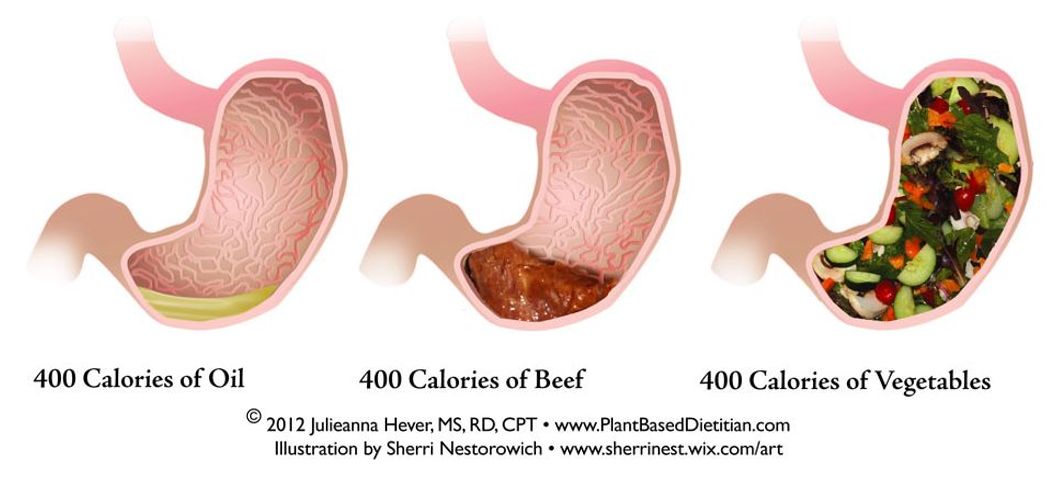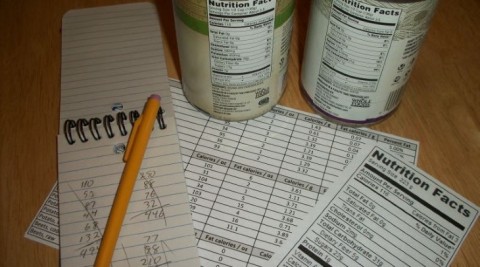DrCarney.com Blog
Counting Calories
I used to believe that one's weight was a simple matter of calories in verses calories out and that calories are calories regardless of source. However, over the years of Type-1 diabetes testing, logging and analyzing, I have learned that it is not that simple. A major lesson learned is that carbohydrate calories and fat calories are processed and used differently: Fat is storage, Carbohydrates are fuel.
It is indeed true that calories are calories and energy is energy, however, the form of energy dictates what is done with it. Fat contains the highest energy density by a very large margin. That would suggest that fat should provide more energy than carbohydrates, however, the molecular construct of fat is storage and requires complex conversions to be burned as fuel. Since carbohydrates are already composed in a fuel form, it is readily burned into energy. Thus, when carbohydrates and fats are eaten, the carbohydrates are quickly converted to energy and the fat is stored as - fat.
 I think it would be commonly agreed that what is being pinched in this photo is fat. I have never heard it referred to as "belly sugar", "belly starch", or "belly carbs". I think we all know; it is fat. As Dr. McDougall proclaims, "The Fat You Eat Is The Fat You Wear."
I think it would be commonly agreed that what is being pinched in this photo is fat. I have never heard it referred to as "belly sugar", "belly starch", or "belly carbs". I think we all know; it is fat. As Dr. McDougall proclaims, "The Fat You Eat Is The Fat You Wear."
So, even though carbohydrates contain less energy density than fat, it provides immediate energy, with far less processing and toxic waste byproducts. The ratio is at least 10 to 1.
Biology is truly amazing. Our bodies are designed with complexities beyond our comprehension, but on a macroscale, some elements are quite simple. For example, everything fits. Notice that your legs are just the right length - reaching all the way to your feet. Your lungs and heart are just the right size and your intestines are just the right length. Also, notice that the calorie density of low-fat* whole plant foods is an exact match to the size of the human stomach.

One can stuff one's stomach completely full of starchy (high carbohydrate) whole foods at every meal and never become overweight. This is because the maximum calorie content of whole, low-fat* plant foods that can fill one's stomach matches the energy and nutrient requirements of the human body - even for extreme athletes. (Exceptions* include nuts, avocado, coconut, olives, etc. which contain more than 75% fat.)
Likewise, one's body weight will perfectly fit their frame when fueled and nurtured by a low-fat* whole food plant based human diet.
* Low-Fat is foods that contain 10% or less calories from fat. Example; a nutrition label indicates 1oz contains 100 calories and 10 calories from fat. 10 (fat) ÷ 100 (total) = 10%. Foods with 11-20% are medium fat and all above 20% is high fat. This only works with energy units, such as calories, because energy densities are wildly different. Comparisons using grams will yield incorrect results.
Please understand that I am not a medical professional in any capacity. This writing is only to share my experience and what I have learned from it.
DrCarney.com allows Member Blogs. Opinions in Member Blogs are views of the Member Blogger and not necessarily of Dr. Carney. Registered Users may request a FREE upgrade for blogging permission. Bloggers agree to support Dr. Carney's Starch-Smart-System.
When you subscribe to the blog, we will send you an e-mail when there are new updates on the site so you wouldn't miss them.




